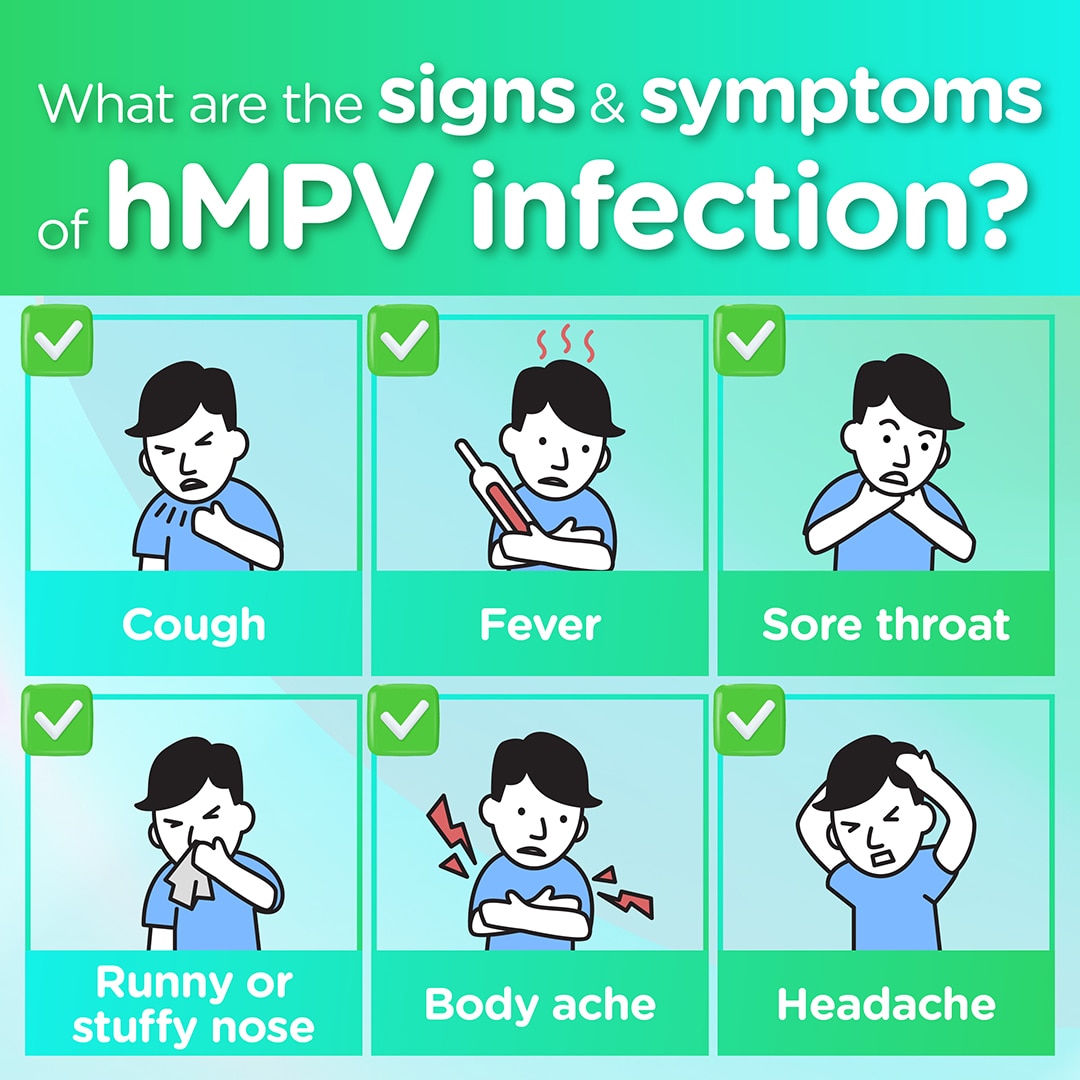When you get hit with cold symptoms like coughing, fever, and body aches, you likely assume you’ve caught the latest cold or flu bug. But there’s another viral culprit that could be behind your misery – human metapneumovirus (hMPV).
hMPV is a common respiratory virus that can cause upper and lower respiratory tract infections in people of all ages. Learn more about it now.
Understanding hMPV

What are the signs & symptoms?
For most healthy children and adults, an hMPV infection feels just like a bad cold, with a range of cold or flu-like symptoms:
- Cough
- Fever
- Sore throat
- Runny or stuffy nose
- Body ache
- Headache
However, hMPV can pack a tougher punch than the typical respiratory virus, especially for young children, older adults, and those with weakened immune systems, causing infection of the lung (pneumonia) or inflammation of the airways to the lungs (bronchiolitis, bronchitis).
Signs that an hMPV infection may be escalating include persistent fever, severe fatigue, dizziness, and dehydration. If you or a loved one experiences worrying symptoms, it’s crucial to seek prompt medical attention.
Sore throat & cough

How does hMPV typically spread?
Like many respiratory viruses, it is primarily spread through respiratory droplets when an infected person coughs or sneezes. The virus can also potentially spread by contact with contaminated surfaces and then touching the eyes, nose or mouth.
How is hMPV infection prevented?
Unlike influenza, there’s no vaccine yet for this common respiratory virus. But you can still protect yourself and loved ones by taking the same preventive steps as for any respiratory bug:
- Wash hands frequently with soap and water
- Avoid close contact with sick individuals
- Don’t touch your face with unwashed hands
- Clean and disinfect surfaces regularly
- Stay home when ill to prevent spreading viruses
Practicing good hygiene and limiting contact with those showing symptoms are the best ways to prevent catching or inadvertently spreading hMPV and other respiratory viruses.
Most infections resolve on their own with rest and symptom management, but healthcare providers can perform testing to confirm the virus and provide appropriate treatment if complications develop.













